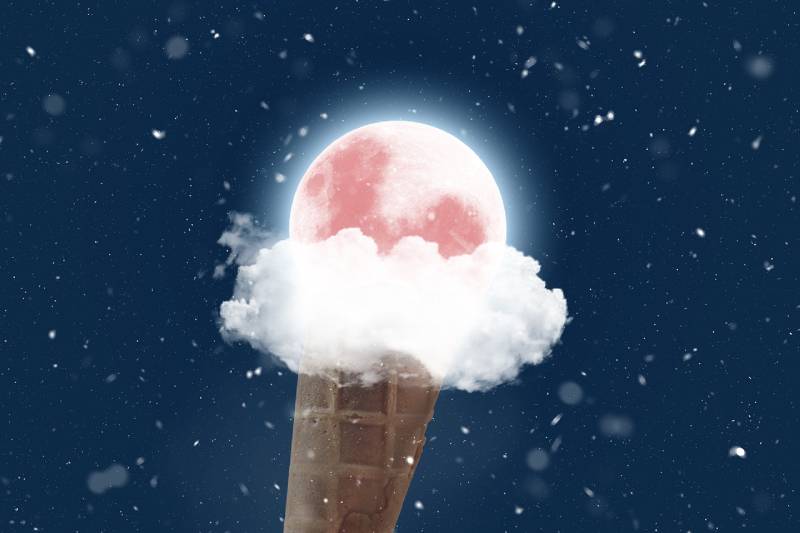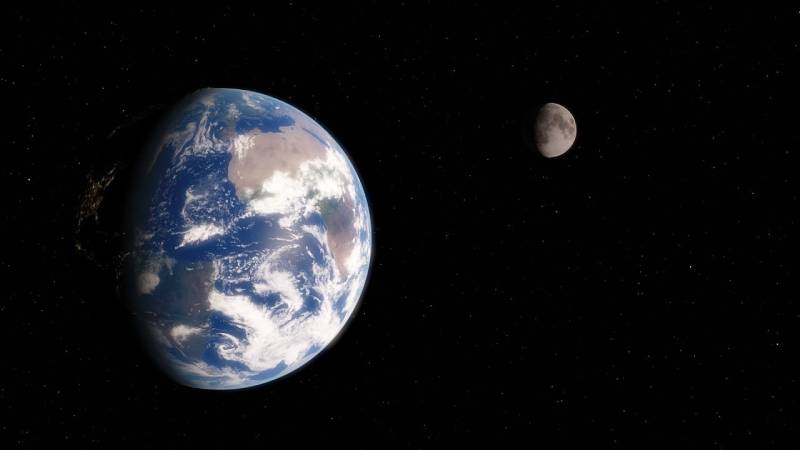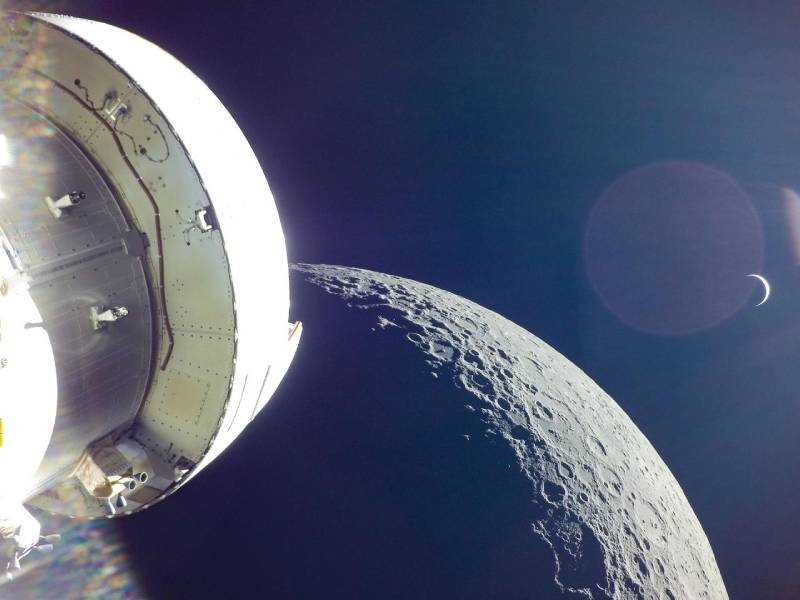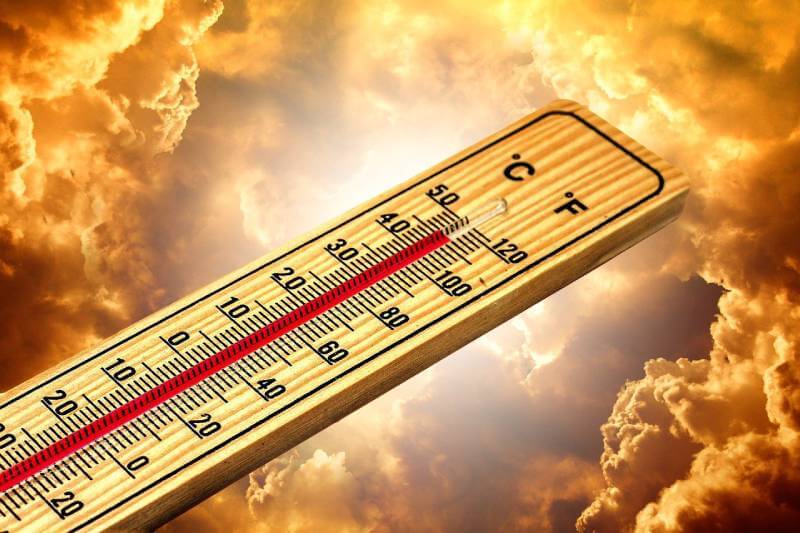It is quite common knowledge that the moon has a much different temperature than that of Earth! In elementary school, we learned that the moon is extremely cold and that is why we cannot live there. That is only partly true.
So, what is the temperature of the moon? The temperature of the moon is completely dependent on the time of day. The moon can get so hot that it is a boiling temperature of 250° F. But, then the moon can also get so cold that it reaches -208° F.
The temperature also changes depending on where you are located on the moon. Much like the Earth, the moon has an equator and poles that vary in temperature. So it all depends on the location and time. Either way, the moon has extreme highs and extreme lows, making it difficult to research.
How Hot is the Moon?
When the moon experiences daytime, the moon can get boiling hot near the lunar equator. If you were to be near the equator during the daytime you would be experiencing temperatures reaching 250° Fahrenheit (120° Celsius).
How Cold Is the Moon at Night?
At night the moon drastically changes in temperature. The moon goes from 250° F to -208° near the equator. Researchers have found that the north and south poles get much colder than that of the equator. The temperature of the north pole can reach – 424° F.

The temperature of the moon fluctuates throughout its cycle to extremes. There isn’t a time when the moon is at a consistent livable temperature.
What is With the Temperature of the Moon?
Why does the moon have such drastic changes in the temperatures depending on the night or day? The main culprit of the drastic changes in temperature is due to the moon’s lack of atmosphere. An atmosphere is very important in the regulation of temperatures and the sustaining of human life.
The fact that the Earth has an atmosphere is just one of the reasons that it can support life.
The Moon’s Lack of Atmosphere and Impact of Temperature
An atmosphere plays a crucial role in the regulation of a planet’s and celestial body’s temperature.
● Insulation: The atmosphere of a planet (such as Earth) acts as a thermal blanket. When heat gets into our atmosphere our blanket makes it harder for the heat to be released. Essentially, our atmosphere provides a buffer against extreme temperatures. When you don’t have insulation, then the hot air approaches the surface easily and leaves the surface just as easily.
● Greenhouse Effect: Carbon dioxide, methane, Water vapor, and other Greenhouse gases trap infrared radiation from the planet’s surface. The trapped heat warms our planet, which allows for a stable temperature range.
Since the moon doesn’t have an atmosphere, it doesn’t benefit from the temperature-regulating components that the Earth has. The moon doesn’t have anything to protect it from the direct heat of the Sun and doesn’t have anything to stop the hot air from leaving the surface at night.
If the Earth didn’t have an atmosphere we would all die (for multiple reasons). But one of the reasons is that the Earth would become extremely hot during the day and unbearably cold during the night. It would be impossible to sustain human life.
The Length of the Day and Night
The moon takes about 28 Earth days to make one complete rotation. Therefore, the moon’s daytime is equivalent to 14 days on Earth. And the moon’s night is equivalent to 14 days on Earth.

With the extended length of the day and night on the moon, the moon can experience extreme temperatures. On Earth, right when it starts getting too cold, the Earth begins daytime and starts to warm up. When the Earth is beginning to get too hot then the Sun goes down and it begins getting cold.
The moon doesn’t have the same day and night schedule, so the moon is at night time for 14 days, which makes it possible to get excruciatingly cold! Then the moon is in the warmth for 14 days and it can reach a boiling point. It would be interesting to see the differences in temperatures if the moon experienced the day cycles as we do on Earth.
Lunar Exploration
Space and Lunar exploration have been one of the most exciting and thrilling endeavors that have captivated the imaginations of scientists around the world. However, there have been many hurdles in order to fully investigate the moon and other celestial bodies for both unmanned and manned explorations.

One of the most daunting challenges faced by all lunar missions has been understanding the extreme temperature conditions on the moon’s surface. There is no middle of the road where the space rovers and astronauts can land. The nights get bone-chillingly cold and the days get scorching hot. Due to the hostile extremes, scientists had to be creative.
Before sending any astronauts to the moon, scientists had to determine if they were going to send them there during the extreme heat or the impressive cold. NASA decided to send the astronauts to the moon during what would be referred to as lunar dawn. They figured this would be the best time when the moon wasn’t at its coldest but wasn’t heated up quite yet.
Temperature Resistant Equipment
It was vital for NASA and other institutions to make equipment, vehicles, and suits all resistant to extreme temperatures. Thousands of tests were involved to ensure that the solar missions would be successful and without issue!
With every mission, they learn something new and make changes to create a better experience on further missions. For example, NASA is making improvements to the spacesuits. The last time that the astronauts were on the moon in the 70’s, they made complaints about their suits. For the upcoming Artemis mission, the astronauts will have better suits.
In the first Apollo mission, the astronauts were complaining about the fact that lunar rocks were piercing through their suits and they wanted to get that upgraded. With this upcoming mission, the astronauts will hopefully not complain about the rocks piercing through the suits.
Scientists, astronauts, and researchers are continuously changing and adapting to make the best equipment for the specific environment in space and on the moon.
Understand the Moon’s Temperatures at Future Explorations
Understanding the moon’s temperatures was an essential discovery. It was important to fully understand the extremes so that scientists and researchers could create equipment that adequately holds up. It is important for everything to not get overheated or freeze. We are continually learning more and more about the moon. The exploration of space, the moon, and beyond will never be complete.

